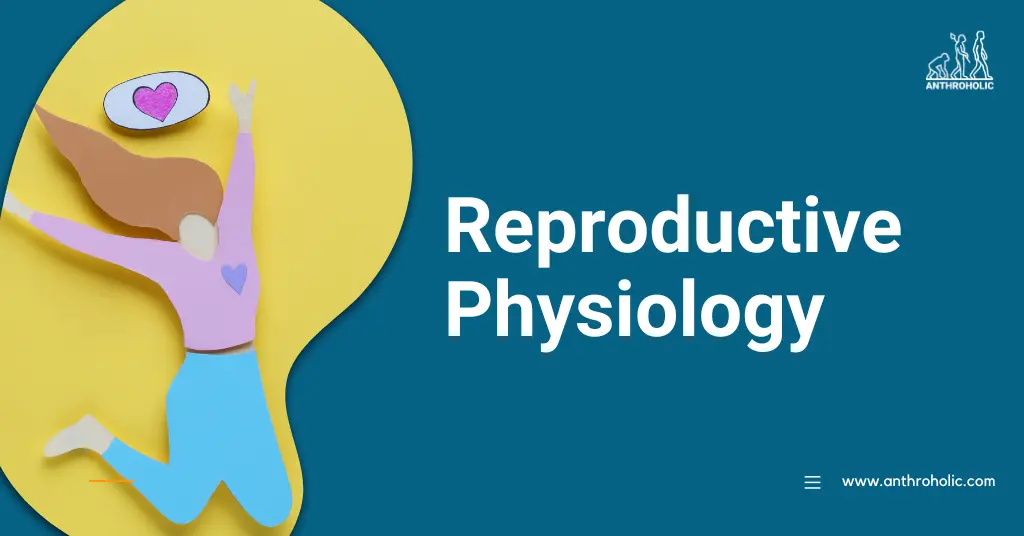AI Answer Evaluation Platform Live Now. Try Free Answer Evaluation Now
Reproductive Physiology
Reproductive physiology, a specialized branch of human physiology, is an intriguing science that underscores the biological events leading to human reproduction. Understanding the crucial processes, hormonal influences, and remarkable adaptations involved can offer valuable insights into both fertility and disease mechanisms [1]. This article provides a comprehensive look at reproductive physiology, focusing on male and female systems, hormones, and the influence of the external environment.

Male Reproductive Physiology
The male reproductive system is an intricately designed complex with the primary role of producing, storing, and delivering sperm to the female counterpart.
Anatomy and Function
- Testes: Containing seminiferous tubules, they produce sperm and testosterone, a key hormone for male sexual development and fertility.
- Vas Deferens: Transports mature sperm to the urethra for ejaculation.
- Prostate and Seminal Vesicles: Produce seminal fluid to nourish and transport sperm.
Hormonal Control The hypothalamus releases gonadotropin-releasing hormone (GnRH), which triggers the pituitary to release luteinizing hormone (LH) and follicle-stimulating hormone (FSH). LH stimulates testosterone production in the testes, and FSH promotes spermatogenesis [2].
| Hormone | Origin | Function |
|---|---|---|
| GnRH | Hypothalamus | Stimulates release of LH and FSH |
| LH | Pituitary | Stimulates testosterone production |
| FSH | Pituitary | Promotes spermatogenesis |
| Testosterone | Testes | Influences male sexual development and spermatogenesis |
Female Reproductive Physiology
The female reproductive system is not only designed for egg production but also for nurturing a developing fetus.
Anatomy and Function
- Ovaries: Produce eggs and secrete the hormones estrogen and progesterone.
- Fallopian Tubes: Transport the egg from the ovaries to the uterus; the site of fertilization.
- Uterus: Hosts the implanted fertilized egg and supports fetal growth.
Hormonal Control The hypothalamus, pituitary, and ovaries create a feedback loop that orchestrates the menstrual cycle. The hormones involved include GnRH, LH, FSH, estrogen, and progesterone [3].
| Hormone | Origin | Function |
|---|---|---|
| GnRH | Hypothalamus | Stimulates release of LH and FSH |
| LH | Pituitary | Triggers ovulation and stimulates progesterone production |
| FSH | Pituitary | Stimulates follicular growth and estrogen production |
| Estrogen | Ovaries | Regulates menstrual cycle, stimulates uterine lining growth |
| Progesterone | Ovaries | Prepares uterus for implantation, maintains pregnancy |
Influence of External Environment
Reproductive physiology can be influenced by external factors like nutrition, stress, and environmental toxins. Studies indicate that malnutrition can impair fertility by affecting hormonal balance. Chronic stress influences the hypothalamic-pituitary-gonadal axis, impacting both male and female fertility [4]. Exposure to environmental toxins can lead to reproductive disorders by interfering with hormone function [5].
Reproductive Physiology in Other Species
The principles of reproductive physiology extend beyond humans to all sexually reproducing species. Notable differences exist in various animal models, which can offer further insights into the mechanisms of reproduction.
Mammals Mammalian reproduction involves similar hormonal pathways as humans but varies in cycle length, gestation period, and number of offspring per pregnancy. Some species, like marsupials, have unique reproductive adaptations such as a bifurcated uterus and delayed implantation [6].
Birds Avian reproductive systems are unique, with females typically having only one functional ovary and oviduct. Unlike mammals, both male and female birds can contribute to eggshell formation. Their reproductive cycles are tightly regulated by environmental cues, especially day length [7].
Fish Fish reproduction offers the most diversity, with examples of internal and external fertilization, hermaphroditism, and parthenogenesis. Hormonal control of reproduction, although less well-understood, also appears to involve GnRH, LH, and FSH [8].
The Impact of Age on Reproduction
Age is a significant factor influencing reproductive physiology in both sexes.
Female Age and Reproduction Fertility in women peaks in the mid-20s, then gradually declines, with a more rapid decrease after age 35. This is largely due to the decline in both the quantity and quality of eggs [9].
Male Age and Reproduction Men maintain fertility longer than women, but sperm quantity and quality decline with age, increasing the risk of genetic abnormalities [10].
Reproductive Technologies
Technological advancements have significantly impacted reproductive physiology, offering options to overcome infertility and better control reproductive timing.
Assisted Reproductive Technologies (ARTs) Technologies such as in vitro fertilization (IVF) and intracytoplasmic sperm injection (ICSI) have revolutionized fertility treatment, enabling conception even when natural methods fail [11].
Contraceptive Technologies Hormonal contraceptives regulate reproductive hormones to prevent ovulation, offering control over reproductive timing. Recent advancements include long-acting reversible contraceptives (LARCs) like intrauterine devices and implants [12].
Conclusion
The exquisite complexity of reproductive physiology is a testament to the intricate design of life. Understanding these mechanisms is essential for managing fertility and diagnosing and treating reproductive disorders. As research progresses, our comprehension of reproductive physiology continues to deepen, paving the way for new treatments and technologies.
References
[1] Plant, T. M., & Zeleznik, A. J. (2014). Knobil and Neill’s physiology of reproduction. Academic Press.
[2] Hafez, E. S., & Hafez, S. D. (2000). Reproduction in farm animals. Lippincott Williams & Wilkins.
[3] Speroff, L., & Fritz, M. A. (2005). Clinical gynecologic endocrinology and infertility. Lippincott Williams & Wilkins.
[4] Whirledge, S., & Cidlowski, J. A. (2010). Stress, the Brain and Female Reproductive Function. Cell and Tissue Research.
[5] Craig, Z. R., Wang, W., & Flaws, J. A. (2011). Endocrine-disrupting chemicals in ovarian function: effects on steroidogenesis, metabolism and nuclear receptor signaling. Reproduction.
[6] Tyndale-Biscoe, H., & Renfree, M. (1987). Reproductive physiology of marsupials. Cambridge University Press.
[7] Whittow, G. C. (2000). Sturkie’s avian physiology. Academic Press.
[8] Nagahama, Y. (2005). Molecular mechanisms of sex determination and gonadal sex differentiation in fish. Fish Physiology and Biochemistry.
[9] Broekmans, F. J., Knauff, E. A., te Velde, E. R., Macklon, N. S., & Fauser, B. C. (2007). Female reproductive ageing: current knowledge and future trends. Trends in Endocrinology & Metabolism.
[10] Johnson, S. L., Dunleavy, J., Gemmell, N. J., & Nakagawa, S. (2015). Consistent age-dependent declines in human semen quality: a systematic review and meta-analysis. Ageing Research Reviews.
[11] Zegers-Hochschild, F., Adamson, G. D., Dyer, S., Racowsky, C., de Mouzon, J., Sokol, R., … & van der Poel, S. (2017). The International Glossary on Infertility and Fertility Care, 2017. Human Reproduction.
[12] Glasier, A., Gülmezoglu, A. M., Schmid, G. P., Moreno, C. G., & Van Look, P. F. (2006). Sexual and reproductive health: a matter of life and death. The Lancet sexual and reproductive health series.




